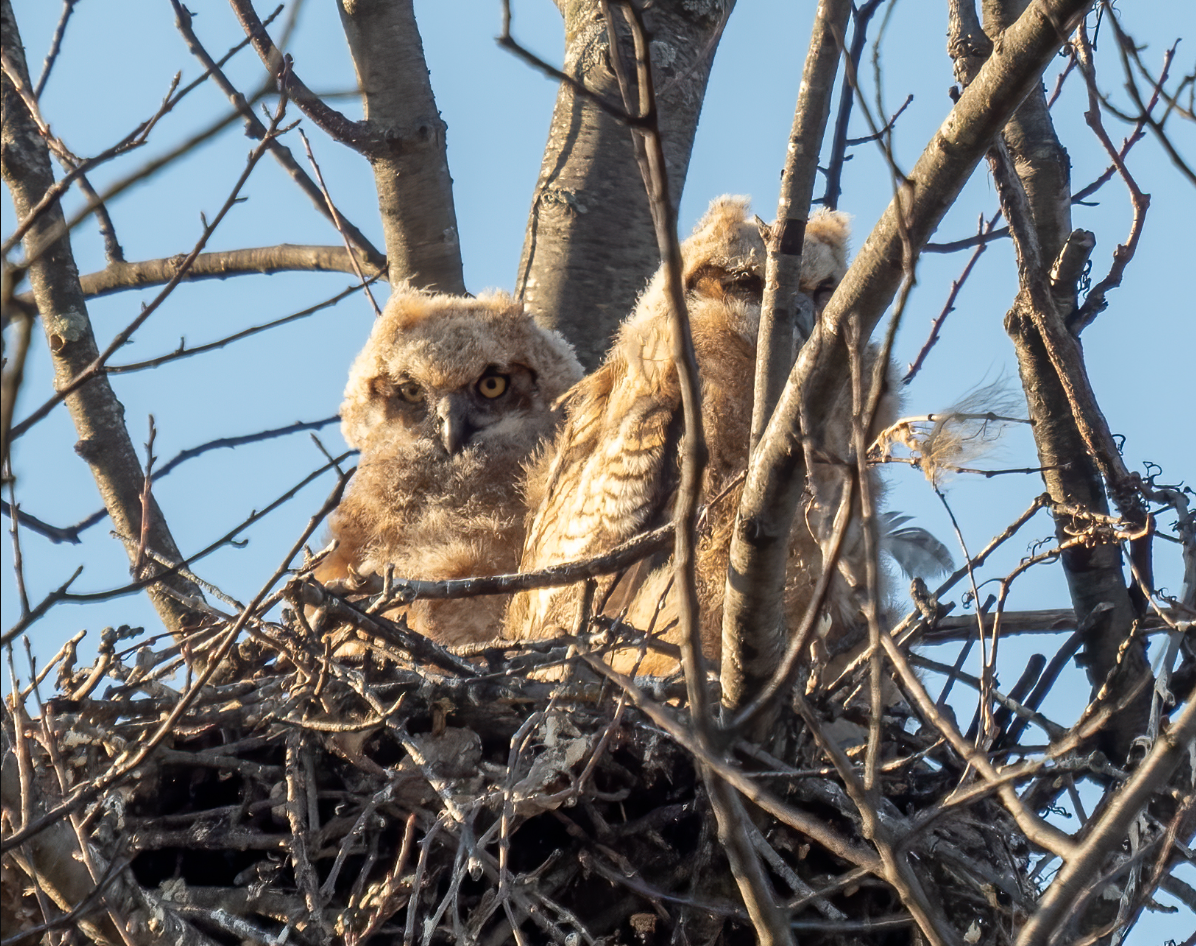Though a vast number of birds flee Alberta winters for warmer climes, there are some residents that stick around all year - and even lay their eggs when there’s still snow on the ground! This strategy may seem strange from the perspective of heat-loving humans, but there’s method in the apparent madness.
Great horned owl chicks. Image credit: Rhododendrites via Wikimedia Commons. CCASA 4.0
Whoo is nesting that early?
Great horned owls, Alberta’s provincial bird, are an example of a species that lay their eggs in the winter. This gives the chicks a headstart in the year and an advantage over later nesters, as most birds delay breeding until later in the season when food sources are more reliable.
Image: Great horned owl hunting. Credit: Gerald Romanchuk
However, for seasoned raptors like owls, this isn’t a problem. Owls hunt for their food, and there’s a direct correlation between how early the owls hatch and the populations of snowshoe hares, with the earliest hatch times being recorded in years when the hare population peaks.
Great horned owls rarely put any effort into building or maintaining the nests they occupy, usually preferring to take over existing nests from hawks or corvids (crows, jays, magpies etc.). They don’t tend to re-use nests, since the hatchlings cause so much damage to the nests that they can’t be reoccupied. Talk about a terrible tenant!
Evidence suggests that Great horned owl pairs are exclusive to each other, share the responsibility of defending their nesting territory, and occupy the same areas multiple years in a row. There’s very few species in nature that truly mate for life, and the notion itself is somewhat debated, but it’s clear that Great horned owls display a great level of devotion to their mates.
Have a look for yourself!
Great horned owl on nest. Source: Ellis Bird Farm livestream, 2023.
You can look in on a livestream of an owl pair at the Ellis Bird Farm, located in Lacombe County, on Youtube. As of today, February 14th 2024, there is no activity yet, but later in the season they may show up! This is a great way to get a view of the life of a wild Great horned owl pair.
Ellis Bird Farm is involved with education and conservation, and they oversee an extensive Mountain bluebird, Tree swallow, and Purple martin monitoring program. They have a visitor center with gardens, nature trails, a Wetland Activity Center, and a children’s nature program. Check it out if you’re in the area!
Supporting nature conservation organizations like EALT is an important step in making sure that birds, such as the emblematic Great horned owl, have a place to nest and raise their young each year. If you can’t donate financially, we have numerous volunteer events each year to help keep the lands we steward naturally beautiful!
Thank you for reading and supporting local nature conservation!




